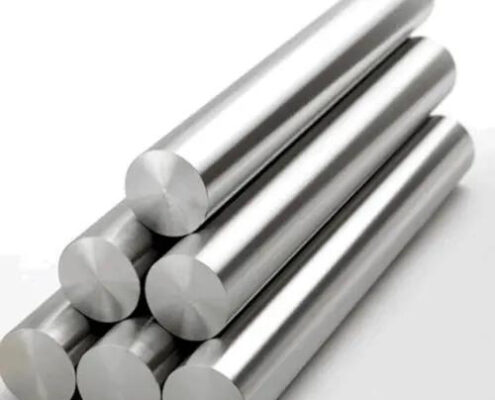Refinement of Titanium Alloy by Hydrogen Treatment
Ultrafine-grained titanium alloy has a series of outstanding advantages, its room temperature strength can be improved to a certain extent, and it has a great elongation when stretched at high temperature. Refined grains are usually obtained by large deformation methods, such as equal-diameter angular extrusion, high-pressure torsion, multi-axis forging, and cumulative coil pressure welding. In addition, hydrogen treatment can also be used for titanium alloys.
In the 1970s, the Moscow Aircraft Manufacturing Research Institute studied the influence of hydrogen on the processing properties of titanium alloys, and proposed the concept of “hydrogen plasticization”, using hydrogen as a temporary alloying element, through hydrogen infiltration, eutectoid decomposition, vacuum hydrogen removal, and other processes. , using hydrogen-induced plasticity, hydrogen-induced phase transformation, and the reversible alloying of hydrogen in titanium alloys to improve processing properties and refine the microstructure of materials.

Hydrogen treatment can be used to refine the grain structure of titanium alloy castings and forgings and improve their mechanical properties. It has been reported in the literature that the microstructure of TiAl alloy can be refined by hydrogen treatment, and its compressive strength and yield strength have been significantly improved. In practical applications, the hydrogen treatment technology can usually be combined with the corresponding subsequent heat treatment and thermal deformation treatment, so as to obtain a very fine grain structure. Studies have shown that large-scale deformation of hydrogenated titanium alloys at a high temperature can form equiaxed fine grains with a grain size of about 1 μm, and even nano-scale grains. The research on Ti-6.3Al-3.5Mo-1.7Zr (%, mass fraction) alloy shows that the hydrogen atomic fraction is 14%-16% in hydrogen treatment, the deformation temperature is reduced to 550 ℃, and then through the deformation process and metastable phase, The decomposition process finally obtained nanocrystalline grains with a grain size of 40 nm. Comparing the engineering stress-strain curves of Ti-6Al-4V alloys with different grain sizes, it can be seen that the ultra-fine-grained materials exhibit high yield strength and high elongation compared with the coarse-grained or general fine-grained materials.
Let the titanium alloy absorb a large number of hydrogen atoms (protium), and then let these hydrogen atoms (protium) desorb under a high-temperature vacuum, this process is called protium treatment. For α + β titanium alloys, the protium treatment includes the following three processes: (1) protium absorption in a hydrogen atmosphere; (2) martensitic transformation and hot working eventually cause dispersive hydride precipitation; (3) final protium desorption treatment and recrystallization. It is reported that the Ti-6Al-4V alloy is treated with protium, and the alloy absorbs 0.5% of protium and desorbs at 873K, showing an ultra-fine equiaxed grain structure with large-angle grain boundaries and grain size in the range of 300-500 nm. Studies have shown that protium treatment increases the content of the β phase in the α matrix. Tensile tests show that the yield strength of the alloy increases at room temperature, and the maximum elongation of 1123K alloy reaches 9000%. It is also reported that the Ti-6Al-4V sheet was treated with protium with a protium content of 0.5%, then quenched at 1223K, hot-rolled at 1023K to a thickness reduction rate of 80%, and desorbed at 873K. In the uniform structure of equiaxed crystals, the grain size is 0.3 ~ 0.5μm. The test results show that the mechanical properties such as superplastic elongation of the alloy increase significantly with the decrease of grain size.
Although the hydrogen treatment method shows great potential for refining titanium alloys, compared with other conventional methods, the hydrogen treatment method has a higher cost, and for larger structural parts, this treatment method also suffers from uneven hydrogen distribution and equipment condition requirements. Higher problems still need further research to solve.
